 Back
Back
Ten things I learned running a Moonshot Factory. By Pablo Rodriguez
Pablo Rodriguez launched Europe’s closest equivalent to Google [X] — a “Moonshot Factory” called Alpha for the Spanish telco Telefónica. Here’s how to do real corporate innovation.

We can’t predict the future, but we can build for it. In the last decade, a new form of innovation has emerged to reinvent businesses, design towards a future we want, boost our collective ambition, become more sustainable and impact the world for good. A form of innovation that anticipates the next big disruption, albeit very difficult to achieve: Moonshots.
Moonshots used to happen in governments and universities. Places that could take long-term risks — to create the Apollo 11 Moon landing programme (the original Moonshot), the Internet, the Human Genome Project.
Now some corporations are embracing the ability to take those long-term risks — not least because the speed of change means “the long term could soon be the next term”.
I’ve been a research scientist, a repeated startup entrepreneur in the Valley, a builder of corporate innovation labs. Running Moonshots has been the most fascinating journey of all.Moonshot thinking started in Silicon Valley with X (Google’s sister company at Alphabet) — self-driving cars and Internet balloons. I ran Alpha, the first European Moonshot factory, established in Barcelona by Telefónica in 2016.
We defined a Moonshot as something that will affect hundreds of millions of people, have a net positive effect on society through deep tech, and be scalable to a billion-euro business.
At Alpha, we consistently held to the mantra: “Fall in love with the problem, not the solution”.

The Moon (the problem) is the grand challenge that’s hard to solve for. It typically falls in one of the 17 United Nations Sustainable Development Goals (SDGs), such as energy access, reducing chronic diseases and improving learning. It takes a fair amount of work, however, to define a concrete, well-designed problem in any of those spaces, one that’s validated with deep human insights. When you find and solve for such a Moon, you can provide huge social value to society as well as big business opportunities.
The tough part is picking the right Shot (the solution to the problem). At Alpha we focused on technology-driven shots: finding a maturing technology (typically in labs or universities) ready to be accelerated. Now, there’s a danger that you may fall in love with a great shot, and lose track of the Moon you’re daring to reach. So fall in love with the problem, not the solution — or you may end up with a beautiful sophisticated hammer, but no nails to hit.
Moonshots have much in common with startups, but they’re not startups. A Moonshot organisation needs capital and corporate muscle behind it to take things to scale and provide the patient investment required — as opposed to quick venture-capital returns expected in startups, which can stifle innovation. In fact, Moonshots are too early or too audacious for most VCs, typically taking far higher technical risks than at a startup.
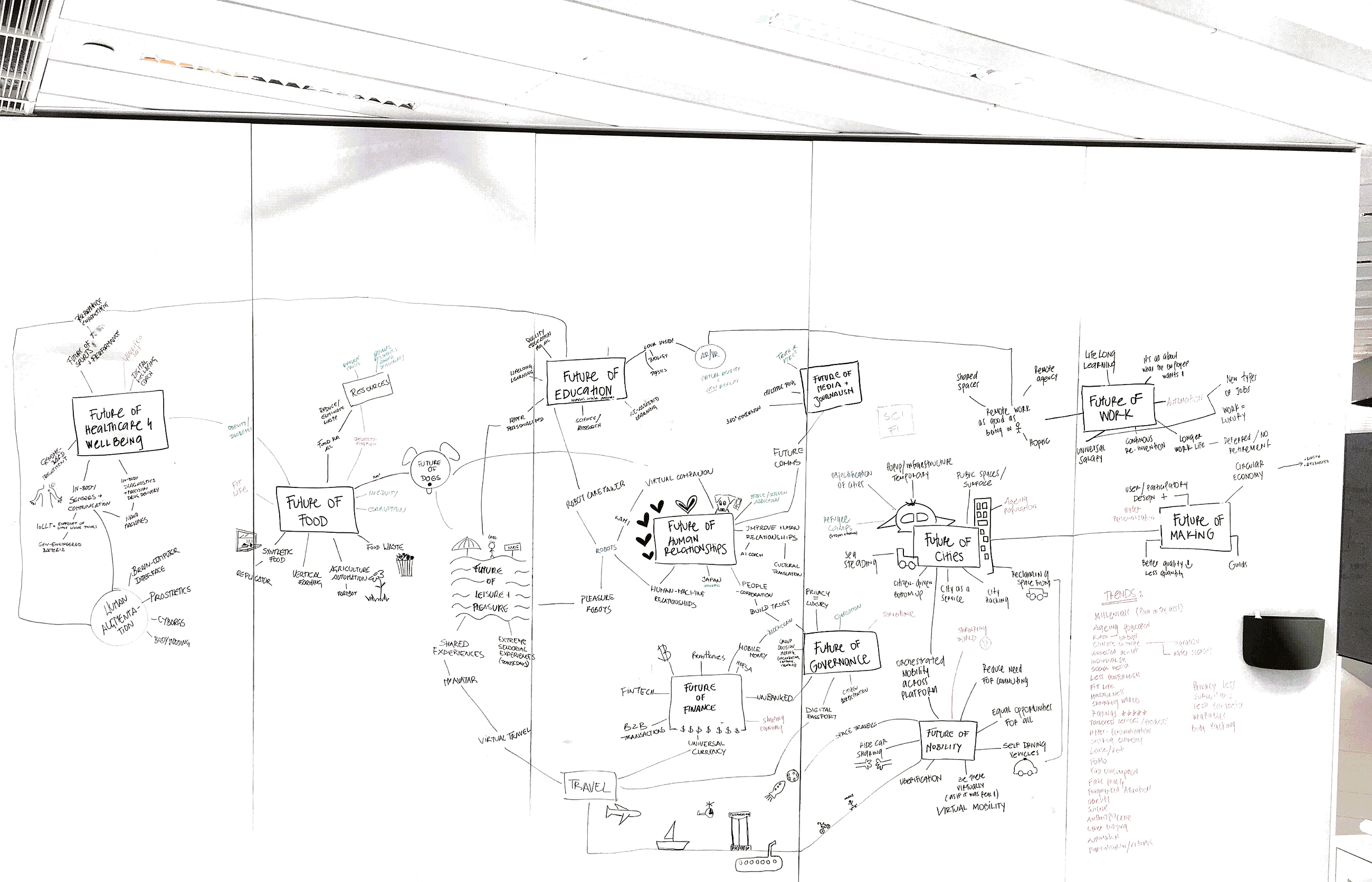
Here are some lessons from my five years setting up and running Alpha on what it takes for a Moonshots to succeed. Alpha’s culture was of frugal operations, short-term proof points and intermediate delivery focus, driven by a cash-strapped funding model, with numerous exercises in prioritisation and idea-filtration. The whole Moonshot organisation — including its talent — had to build itself from scratch at a distance from the parent organisation.
Moonshots Operating Manual — 10 Important Learnings
1 — Difficulty is understated.
If a Moonshot was easy, someone else would have solved it before. Your team needs to understand the journey will be damn hard. You’ll want to quit many times, when you’ll need to remind yourself that it’s supposed to feel like a struggle.
That’s because this form of innovation follows a complex system of interactions. Like epidemics, earthquakes or financial crises, innovation emerges from the connections and interactions between all of us and typically follows a power-law (or long-tail) distribution. If you plot its impact distribution on a logarithmic scale, it will follow a straight line.
For instance, the distribution of occurrences of earthquakes vs their intensity follows this kind of power-law-distribution scale. Plot the number of earthquakes in any year, and you’ll record millions of 2.5-sized quakes, which we don’t even feel.
But about once a year you’ll record an 8.0 earthquake, which causes major disruption. You don’t know where or when such an earthquake will occur, only to expect it roughly once per year. Innovation is the same.

If you plot the number of innovations and their impact, you’ll find many incremental innovations that keep your business running. But from time to time, an innovation will transform everything. This is Moonshot radical innovation. It’s difficult to pick losers and winners upfront: innovation is a probability game, not a deterministic one, Moonshots are difficult because the odds are against you. Failure isn’t necessarily due to ineptitude: Moonshot innovation follows the science of complex systems, and many will fail.
2 — Persistence is required.
Moonshots are typically incubated for five to ten years, building on research done at labs and universities. To beat the probability odds, persistence is key. Don’t expect results in three to five years.
Incremental innovation typically has far shorter and faster returns. I implemented such incremental-innovation transformation at Telefónica over almost ten years to drive intrapreneurship and corporate change (making an elephant dance, which has been turned into Harvard Business Review case study — thanks to Open Innovation Prof. Henry Chesbrough at Berkeley).
There is really nothing wrong with this kind of innovation: many startup incubators and corporate-innovation arms follow this model. But Moonshots fall into the category of transformational or disruptive innovation. They require you to dive into the far-fetched future as opposed to iterating from the present. You need to commit to the journey, with persistence, patience, and belief. In the beginning, Moonshot projects can be weird, extremely fragile, and exotic, and don’t really fit with whatever else is going on in the parent company.
The good news is that there is literature about a golden ratio for innovation, which shows that if you invest 10 per cent of your innovation budget into Moonshots, eventually that will bring 70 per cent of your returns.
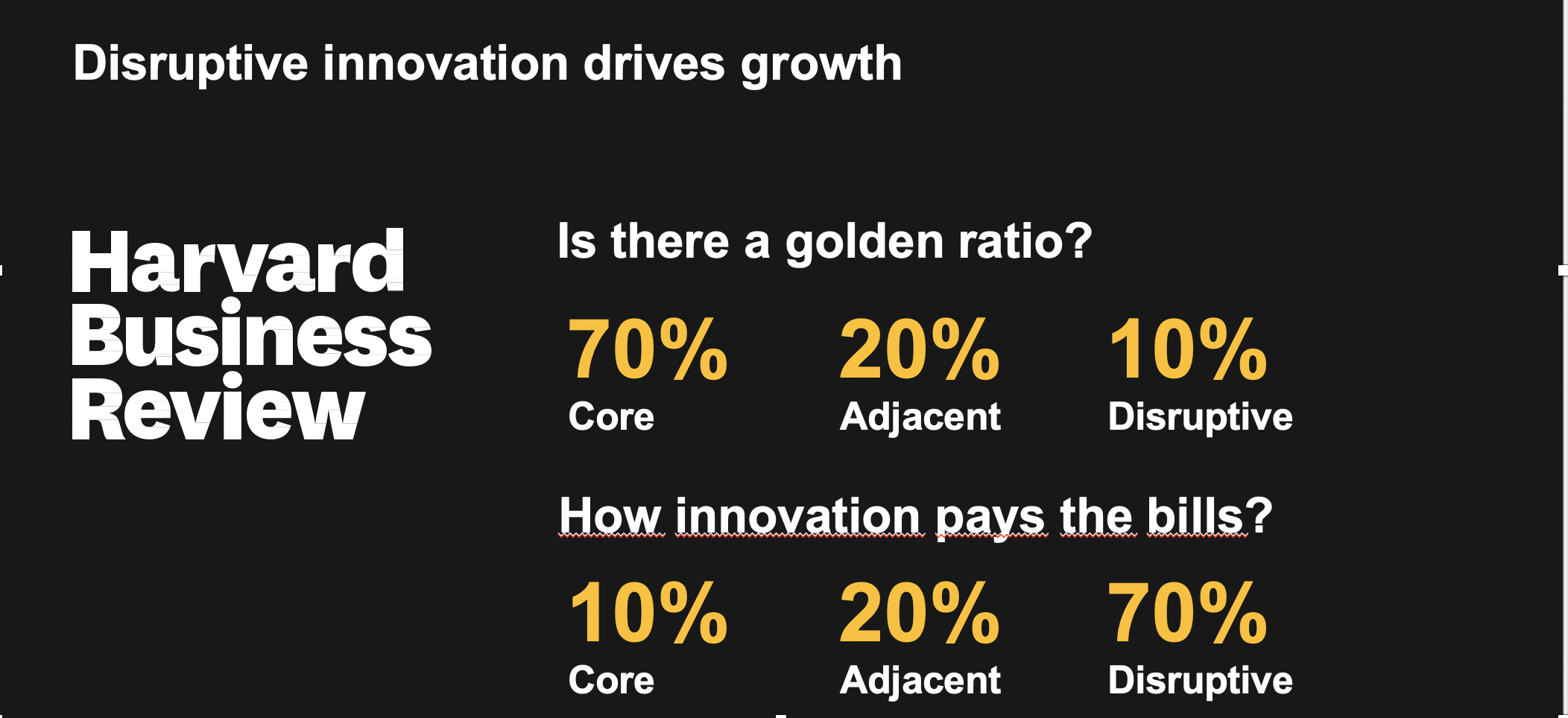
3 — Setting up a Moonshot Factory is a Moonshot in itself.
Moonshots are nifty and exciting. However, the existing business will strive to minimise risk and emphasise predictability, whether in setting budgets or paying staff on time.
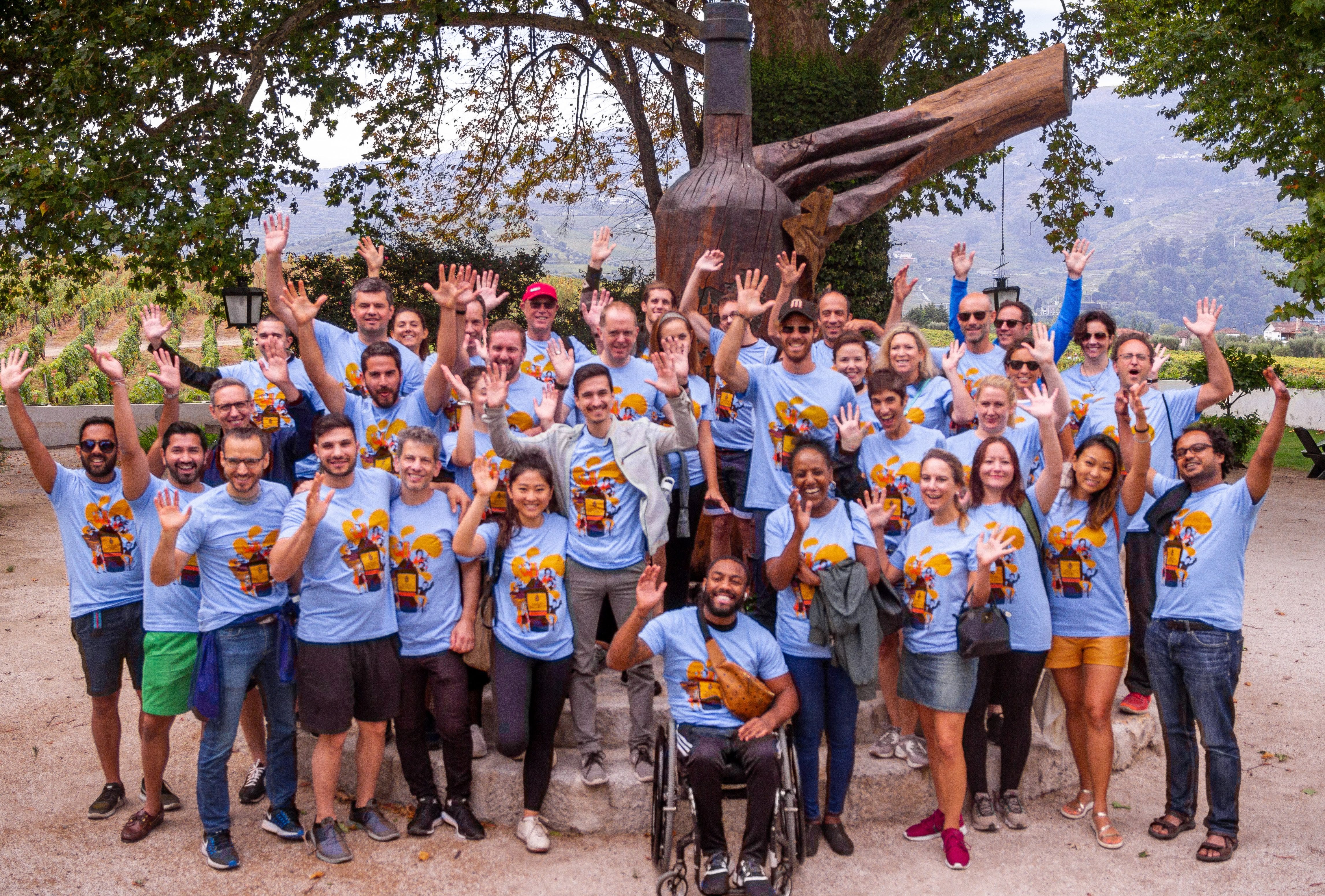
To take the type of risks required by Moonshot thinking, you’ll require a separate organisation outside the deterministic corporate environment (which can be shared by one or multiple corporates or funding entities). This organisation is in the business of risk-taking.
It’s typically a much, much smaller organisation than the mother company. That is a good thing: if it fails, it won’t bring the whole ship down.
It needs to report right to the top, and with a different command structure: you need the personal buy-in of the chairman or a board member from day one. They need to be excited, talking about it with peers, to the board, at a cocktail party. Give them regular updates. Without this commitment from the top, your Moonshot journey will eventually fail.
It took years to set up Alpha, needing alignment and coordination from across the corporation (long-term incentives plans, procurement, HR, legal, finance…). We created a special Disruptive Innovation Council.
As well as a separate corporate structure, you also need a separate and distinct culture. At Alpha this is articulated around a set of core values, including: Brutal Honesty; Curiosity to the power of We; Think Bigger; Patience/Impatience; and Sacred Trust.
Setting up a Moonshot organisation can be a Moonshot in itself, considering how risk-averse most companies are.
Moonshots should not address topics too close to the parent company. Instead, aim to create totally new businesses for industries primed for reinvention that lack a digital or innovation culture.
If you are too close to the mother company, you’ll end up doing more of the same innovation already being done by the corporate R&D departments. If you’re too far, the parent company may see the new opportunities as too alien.
You should be connected to the parent company as if by an umbilical cord. Distant enough to be independent, but connected enough to leverage some of its nutrients and resources.
Make sure your Moonshots can fail by themselves. In fact, they should only be killed within your Moonshot organisation, which has the fullest knowledge to know whether projects are worth continuing or not.
4- Impact and purpose drive revenues.
Doing global good and having a social impact used to be the remit of NGOs or corporate social responsibility teams — decoupled from business and revenue opportunities.
Doing well and doing good don’t have to be at odds.
In fact, to do good at scale you need to make projects financially sustainable. A new social contract is emerging that reevaluates the relationships between individuals, businesses and governments. Some use the phrase “stakeholder capitalism”, that is, capitalism that benefits all of the stakeholders in a given community and where people everywhere will reap the benefits of such progress.
Merrill Lynch recently identified 12 megatrends — including food security, waste management and fixing education — that offer long-term social business opportunities and will provide substantial innovation returns within socially conscious portfolios.

Philanthropy is changing too. Guiding philanthropy towards Moonshot thinking could build a serious force for measurable good and new business opportunities.
Moonshot organisations, in fact, are purpose-driven. They focus on mission and purpose, which align with team members’ inner purpose and mission. A purpose-led organisation will bring people together, their heart and minds in a well-balanced dance towards impact.
Cherish the four Ps: Purpose, Profit, People, and Persistence.
5- Engineer conscious leaders.
Moonshots are about taking calculated risks. So you need the very best people you can find, balancing generalists and experts.
At Alpha, we had a former F18 fighter pilot, who knew how to take very well-calculated risks, alongside an accomplished graphic artist and visual storyteller who made more intuitive leaps into the unknown with unexpected insights and questions. Give them the freedom to act, and get out of their way.
Your leaders’ personal purpose must be aligned with Moonshots, and your teams need to embrace diversity. It takes multiple skills and disciplines working together to solve daunting challenges — a psychiatrist, say, working with an AI engineer and a happiness expert. Your culture needs to ensure that an artist feels valued, an engineer stretched, a serial impact entrepreneur bringing her own beat.
The culture must encompass the rhythm at which each one ticks, and must keep adapting. Culture is organic: it should evolve, be challenged and iterated.
The people who change the world tend to be brave, purpose-led misfits. They’re creative, they’re diverse, and they need an environment that supports them. So nurture them. Unlock their human potential; understand if they are sleeping well and whether they are happy; optimise their food and workplace; give them access to a holistic doctor or group psychotherapy sessions to help them address problems, achieve consensus or improve the creative tension.
You must also embrace psychological safety: a culture where people can fail and dare. If you design against failure, you will soon become yet another corporate innovation lab.
Your mission is to create an environment where smart people can float crazy-sounding ideas which could become boldly creative solutions to tricky problems. You need to protect this culture from the corporate culture, and understand that it’s a difficult, emotional journey to build a Moonshot, grow your team as individuals, and give them unique experiences. It will pay off.
6- Invest in impecable storytelling.
Storytelling helps identify new Moonshot ideas. A Moonshot could originate with a scientific research paper, a sci-fi future scenario (eg a world where humans are augmented by AI), an upcoming trend (a change in demographics in China or Africa), or a grand challenge that is good for the world (such as the UN Sustainable Development Goals).
To identify a Moonshot, project yourself 10 years ahead. In a sci-fi prototyping workshop, you might create future fiction worlds and stories to explore how people’s lives will be transformed by your solution. Make ideas concrete in the form of a science-fiction comic, or videos, that explore future capabilities of current technologies.
Once you imagine a seemingly crazy, science-fiction-like idea, you can retro-cast: track back the steps needed to reach your desired future and understand potential obstacles.
By structuring the storytelling process, you can unlock great creativity, reframe, stress-test and pivot Moonshot ideas. Storytelling helps align your team, your investors, your board, your partners, the community, and the people you are trying to help throughout this journey of hope and delivery. It makes your mission easier to share and relate to.
So tailor well-crafted stories around the Moonshot, its purpose, and your tangible intermediate delivery proof points. Storytelling will align and bring onboard your Moonshot captain, team, experts, and investors. It will seduce them and inspire them to continue.


7 — Be patient, and impatient!
Moonshots are as risky as cutting-edge research, but need to be executed with the focus and velocity of a startup. That’s not always easy. You need the patience to let difficult solutions unravel, and the impatience to undertake them fast.
Experimenting and learning quickly is paramount. Make sure your teams know how to set up great experiments where they can de-risk loads of important unknowns with little costs. Mistakes are fine if you learn fast. Focus on the experiment, not the result. The only real failure is that of not learning anything. Embrace learning!
Prototype early and deliver intermediate proof points. Don’t think too big for your intermediate experiments. If you take a small risk and fail, who cares? Build on that success of failure. Take the minimum effort to learn the most, and do it super cheaply.
Create quick objects from the future, videos with explorations of ideas, paper prototypes, and achieve intermediate Moonshot milestones — which could even become self-sustained small(er)-businesses. Spend a couple of days prototyping something very rough. If it goes nowhere, no one will bother. But if it’s interesting, make the next prototype. Maybe a week’s work. And then move on and on from there.
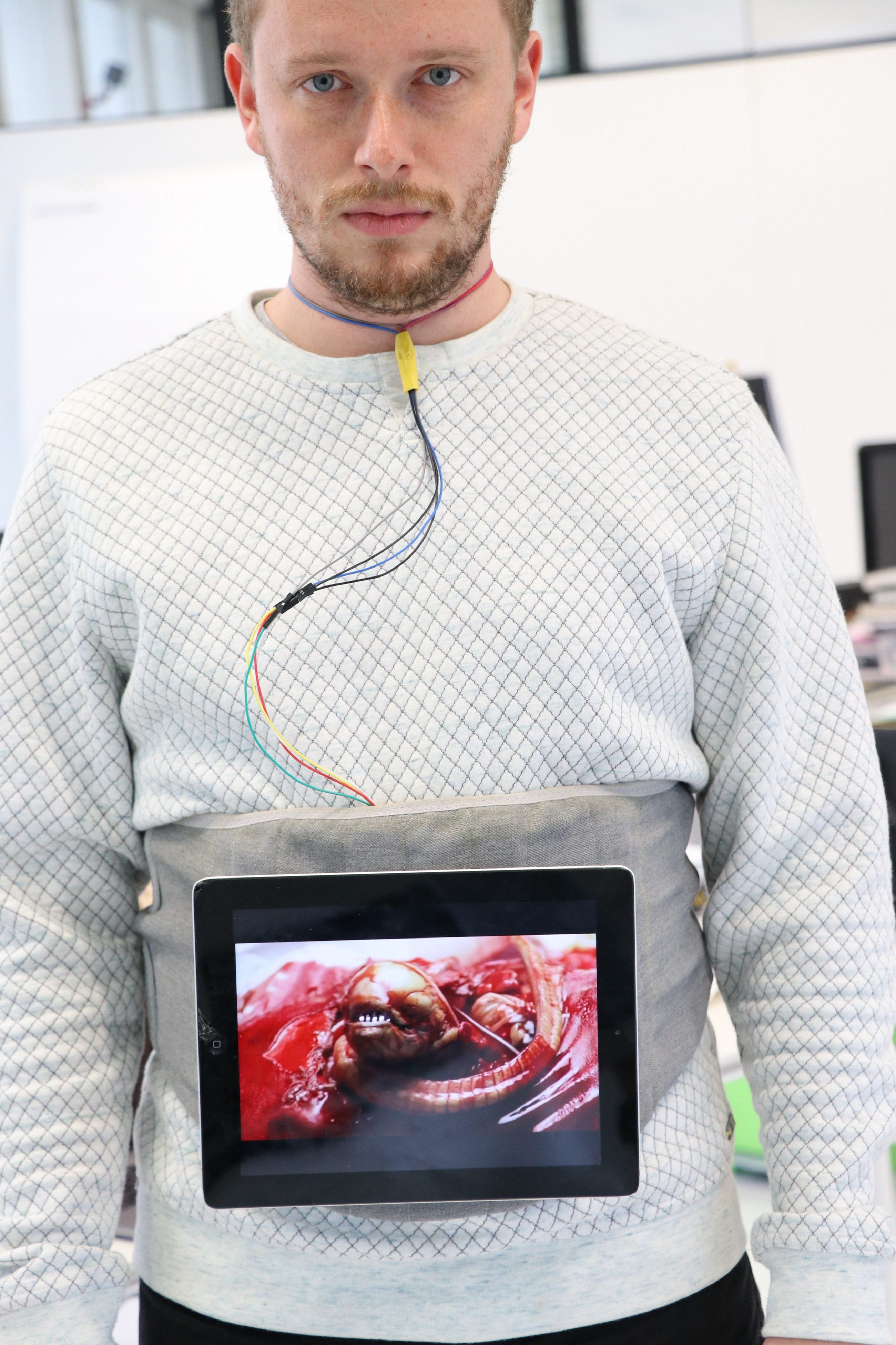
Don’t try to solve all your tech or science problems first and then figure out your business. Instead, develop both the tech and the business in parallel through a product focus: release intermediate products you can quickly test and learn from that serve as evidence of progress. Finding a finance partner already in your market will help test your crazy idea, de-risk faster and give you more validation proof-points.
Rigorous evaluation should let you quickly kill ideas that don’t match the Moonshot criteria. Create red teams, open clinic reviews and appoint murder boards that try to kill ideas fast, or give teams new perspectives. You need to keep yourself intellectually honest, with rigour, and be dispassionate in trying to find the reasons why the Moonshot will fail. Tackle these first. De-risk, and learn super fast.
8 — Master Moonshot Launching, not just Moonshot thinking.
In the early stages of a Moonshot, you need an ideation team. These are small, agile, and diverse teams that work closely with experts, labs and universities. They explore hundreds of ideas, and a handful of more mature Moonshot candidates, and are willing to put their job on the line. You’re trusting them with your company’s future.
Once you’ve identified your Moonshot, you go into the Moonshot Launch process. But before you put together a big expedition, start climbing a bit of the mountain to see if it feels right, start de-risking the path and identifying obstacles.
Engage field experts and potential Moonshot captains early in the process. You’ll need a specialised Launch Captain, a senior member of the team who can temporarily mobilise resources and attract talent and partners.
The key role is the leader of the Moonshot, which we called the Moonshot Captain. A Moonshot Captain should be an entrepreneur who can take an idea all the way to scaling the business. Their mission and purpose in life should be aligned with the Moonshot, and they should be able to build a team with skills that have never before been brought together — a diverse team, not only in gender diversity, but in demographics and backgrounds, from PhDs to artists.

Let me tell you about the first Moonshot Captain at Alpha: Oliver Harrison. Oliver is a trained psychiatrist, specialising in medicine and neuroscience, who spent six years as head of public health and then director of strategy in Abu Dhabi’s health authority, and five years with McKinsey healthcare. These are not skills you’ll typically find in a corporation, let alone a telco.
Bringing talent from the existing core business may conflict with your culture, or will not serve your Moonshot needs. Be prepared to pass on talent if they are not a great culture fit.
To attract talent, map the personas you would love to work with. Map the archetypes that will best help meet your various goals. Get your team to do this persona-mapping exercise together, as it will help them achieve alignment and give them a stronger sense of belonging.
Keep the organisation as small as possible for as long as possible. A handful of people can do great things if empowered and flexible. They should be “confidently humble” and network effectively. Develop an apprenticeship culture, with few managers and very few organisational layers, but with a lot of distributed power. Check in regularly to see what’s working and what is not. And keep resources constrained and budgets small. This will ensure focus.
As the Moonshot advances, bring in an anchor player in that space to help you de-risk faster and be close to the real world. Be ready to share risks with others, with spin-offs and joint ventures. Build a team that can think in terms of scaling from day one, and don’t underestimate the effort of assembling a team of misfits.
9- Nurture a knowledge hub and communities.
You won’t find all the talent you need in-house. But it won’t be easy to identify and bring in people with the right levels of courage, entrepreneurship and creativity — and fast. So build a “knowledge talent hub” and for each Moonshot engage a wider community of experts, misfits, social entrepreneurs, Nobel-prize winners, scientists, doers and kindred spirits who might join your journey for a day, a week, or even the whole Moonshot.
Engage and interact regularly with this network. Build emotional connections with them, and trust. Talk in their language. Understand them. Know where they hang out, how they connect. They’re not “talent” or “candidates” — but human beings. Think about how they’ll interact with your Moonshot organisation’s brand, not the other way around.
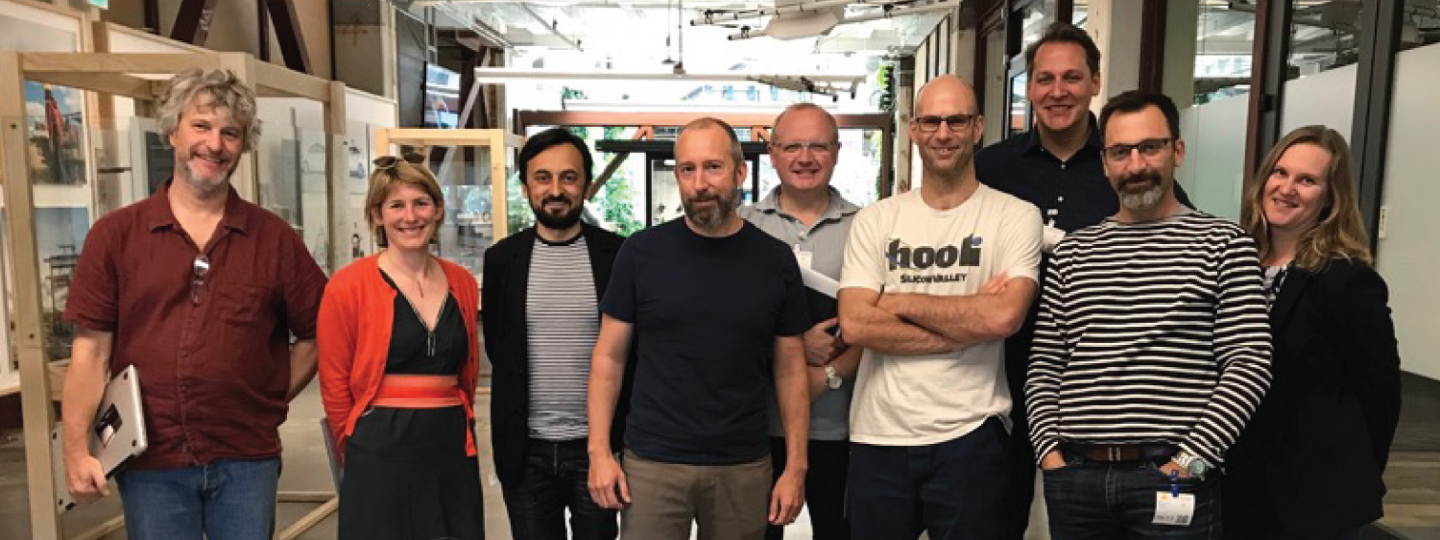

Ensure your organisation is frictionless to work with. You won’t solve Moonshot problems alone. Don’t be insular, or make intellectual-property protection your priority. Instead, set up open Moonshot ideation and brainstorming sessions, hackathons and open launchpad accelerators. And look outside: find out what is happening in a research lab in Lyon or Zurich (not just MIT or Stanford), in Japanese youth culture, in Boston’s biocomputing community.
Reading research papers is less effective than going out into the field, co-creating, building and experiencing things together. You’ll find saplings of opportunities beyond mainstream labs, in Europe, Israel, or Asia, that can serve you as feeders for your Moonshot factory.

10- Invent new metrics.
At some stage, you’ll need to use standard business metrics to measure performance (such as customer acquisition costs, or churn, paid pilots). But for most of the journey, you’ll need to devise new metrics to track progress. The way you evaluate and reward your Moonshot efforts can be as inspiring as your driving aspirations to change the world.
The way you evaluate and reward your Moonshot efforts can be as inspiring as your driving aspirations to change the world we live in.
De-risk your Moonshot milestone by milestone, with relatively short deadlines. Short-term deliverables and proof points will focus your teams. So decide what you need to measure. Build a dashboard with metrics to track various dimensions for each Moonshot, from tech progress to business model. At the start, define your “kill questions” (those that if not fully answered will make you abandon the Moonshot, eg will the science work as forecast?). Address these kill questions at each milestone, so that you invest the fewest resources to answer the next most important questions, as quickly as possible.
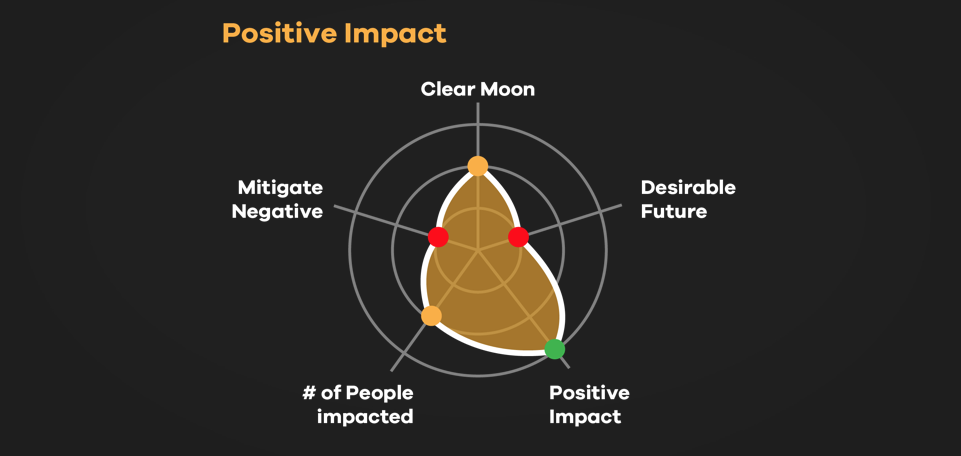

It comes down to definition and measurement. Be super clear about the Moonshot’s goals and feed these in detail into the dashboard. Think of it as a rocket-ship’s dashboard, where various instrument panels let you know that the ship is heading in the right direction and not breaking up under the pressure.
Track metrics such as how much you are de-risking the Moonshot and how quickly, OKRs, KPIs, business modelling, financial indicators, quantitative and qualitative metrics that tie your money spent to the killer questions. But don’t forget that performance goes beyond metrics, and is imbued with stories that involve characters, factual and emotional plotting, conflict, effort, milestones and resolutions. Think of performance as scenes, as in a play, that will evolve and contribute to the overall performance of the learning of the Moonshot.
A learning log can help track the various ways of “knowing”: narrative, visual, dialogic, quantitative and qualitative. All of your learning logs will constitute the institutional memory of the Moonshot. They will become the repository for knowledge, instead of a mere list of achievements, and serve as a spirit of reflection.
Sometimes you need to trust intuition, as there are things that metrics can’t tell. Seeing the energy in people at work, their passion or belief in what they are doing, how their eyes shine — this will help teams define success or failure.
Measure and nurture such energy and make sure it grows. If not, react. Have brutally honest conversations, and if something is not working understand why.
As for yourself, as a leader of Moonshots, work on the organisation’s energy blockages that impede true innovation. Be a great networker, nurture trust, share vulnerabilities, beware of “good news” only and “avoid failure” behaviours, be a source of inspiration and boldness, stimulate constructive conflict, and generate creative entropy across the teams and beyond.
And be ready to unlearn and undo many paths towards learning again.
The faster we iterate to get things right, AND wrong, the higher our chances of successfully solving some of the biggest challenges facing humanity.
photos © alpha, futur.io